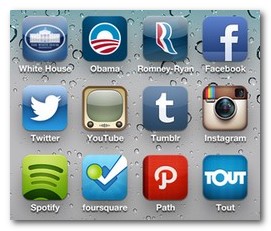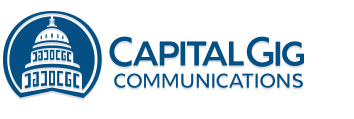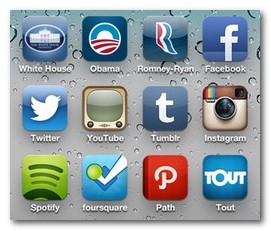 This year, we will all witness and likely participate in the 2012 U.S. presidential election in an unprecedented manner thanks to social media and rapidly emerging technology. Not only are the campaigns and mainstream media using these tools, but voters will also have unique opportunities that will help inform their vote on Election Day come November. Here are five ways that digital media is changing the modern political environment in the U.S.:
This year, we will all witness and likely participate in the 2012 U.S. presidential election in an unprecedented manner thanks to social media and rapidly emerging technology. Not only are the campaigns and mainstream media using these tools, but voters will also have unique opportunities that will help inform their vote on Election Day come November. Here are five ways that digital media is changing the modern political environment in the U.S.:
- Message
Whether it is the economy, healthcare, tax reform, national security or the soaring federal debt, both campaigns are using their own Web properties, digital tools and social media to augment messaging around key issues. Back in May, the Obama camp rolled out an interactive timeline of a fictitious woman named Julia that contrasted what life would be like for her under President Obama’s policies versus those of Mitt Romney. “The Life of Julia” was a creative way to present ideas and offered users the ability to share them via social media and email. However, not everyone agreed with President Obama’s message. Understanding that digital channels can also be very effective for rapid response efforts, the Heritage Foundation published their version called, “A Better Life for Julia.” However Julia grows up, one thing is clear: she effectively generated awareness about President Obama’s message and created substantive discussion both online and in the media. - Content
Publishing content that uses both text and visuals together in social media outlets can improve engagement, increase click-through rates and leave lasting impressions. Complex issues such as the U.S. federal budget, for example, are better explained with the aid of charts and graphs. No one understands that better than GOP vice presidential nominee Paul Ryan. As current chairman of the House Budget Committee, he has long been utilizing various charts and graphs on the House Budget website that attempt to define both the challenge and his ideas for a viable solution. - Community
Establishing an online location such as BarackObama.com or MittRomney.com for supporters to gather, receive updates, share content, donate, volunteer and participate is just the first step. Building a community of people through unique user experiences directly tied to achieving campaign goals is the aim of any effective political effort. This idea isn’t new either, but advanced online tools have enabled modern campaigns to develop sites like MyMitt and Obama-Biden’s Dashboard, easing the process of getting involved, taking action and tracking volunteer efforts completed on behalf of the candidate. Social media channels provide an opportunity to reach and engage with established communities such as those on Facebook and Twitter. President Obama has an impressive 28 million likes to Mitt Romney’s 5.5 million. Paul Ryan’s VP Facebook page reached over 2 million likes after he was announced as Romney’s running mate, compared to a total of only 370,000 for Vice President Joe Biden. Advertising on social media and in search engines likely contributed to this rapid growth, but the organic power of personal social graphs cannot be denied. In addition, there are other communities that campaigns are seeking to reach this cycle through social media platforms such as Google+, Foursquare, Pinterest, Flickr and Instagram for photos and even Spotify to share music and playlists with supporters. The microblogging site Tumblr has also emerged as a favorite among both the Obama and Romney campaigns due to its publishing flexibility, built-in community and social media integration. - Fundraising
National political campaigns aren’t cheap. A few large party donors have traditionally played a key role in funding presidential campaigns in the past but the Internet has leveled the playing field. These days, online donation forms have transferred the power of small donors in large numbers to equal and in some cases, outraise larger contributors. To further make this point, the Obama campaign developed an interactive infographic last October when they reached 1 million donors called, “1,000,000 Donors Strong.” More recent data also show that earlier this month, the Republican National Committee announced that it raised $37.7 million in July, making it the best July in RNC history. Additionally, after Romney announced Paul Ryan as his VP pick, the campaign raised $7.4 million online in 72 hours thanks to over 101,000 donors. - Mobile
Many Americans don’t leave the house without their mobile phone and campaign strategists know it. That’s why both the Obama-Biden and Romney-Ryan tickets seek to leverage mobile technology and applications to better engage voters, collect data, organize volunteers, inform campaign strategy and increase “Get Out the Vote” (GOTV) efforts on Election Day. The “Obama for America” app is designed to be an advanced political tool complete with news, maps, polling location info, event registration and a “Canvass” feature that allows users to collect and share data while walking door-to-door in local neighborhoods. The Romney campaign’s “Mitt’s VP” app was launched a few weeks prior to the announcement of Paul Ryan as his running mate. Those who downloaded the app were asked to create a “MyMitt” account in order to receive news in advance of who Governor Romney had selected to be his VP nominee. Although the news broke late the night before, the app was updated early on the morning of the announcement and the campaign undoubtedly collected many new subscribers. Both apps utilize social media by letting users share activity on Facebook and Twitter. The data collected will prove invaluable in November, especially in swing states where turnout is crucial. For example, in 2008 the Obama campaign sent three to five texts to each subscriber on Election Day with notes encouraging the recipient to vote. They also tracked the weather reports across the country and if it was raining where you lived, you received a few more because the campaign feared that voters may be deterred from heading to the polls in inclement weather.
All of these tools and tactics are designed to help candidates do one thing – win elections. When it is all said and done, that is the only thing that counts and digital efforts can’t exist in a vacuum. Online and offline activities have to be aligned and complement each other to optimize the chance for victory. After all, when the polls close on Election Day, it doesn’t matter how many Facebook likes or Twitter followers or YouTube views the campaign can claim. The only numbers that matter are the amount of votes counted in their favor.
What role do you think digital will play in the election?
UPDATE 9/1/12
Just this past week, Mitt’s VP app was converted into a Romney campaign app to provide hundreds of thousands with information about news, policy issues and events. (You can read more about the new Romney-Ryan app via BuzzFeed: Romney’s App Gets New Life)
Though I thought it was implied, perhaps I should have added the qualifier that the Internet has “helped” level the playing field. Under current law, individual contributions are limited to $2,000 so the ability to compete is extremely limited when compared to bundlers and the fundrasing power of the DNC, RNC, PACs and Super PACs who some claim could be pumping in as much as $3 billion across all political campaigns of both parites this cycle. Other than the Internet, I don’t know of any other methods that can raise and process $7.4 million donated by 101,000 people in 72 hours.
Originally posted on EdelmanDigital.


Anonymous
It’s a shame you don’t have a donate button! I’d without a doubt donate to this excellent blog! I suppose for now i’ll settle for book-marking and adding your RSS feed to my Google account. I look forward to new updates and will talk about this website with my Facebook group. Chat soon!
Anonymous
Excellent post. Keep writing such kind of info on your blog. Im really impressed by your blog